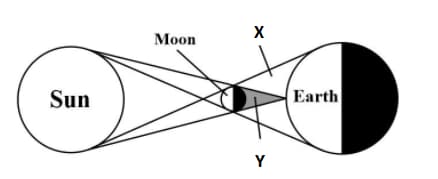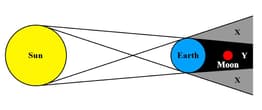Shadows and Eclipses
Shadows and Eclipses: Overview
This topic covers concepts such as relative positions of the sun, the moon and the earth at full moon day, relative positions of the sun, the moon and the earth at new moon day, solar eclipse, total solar eclipse, partial solar eclipse, etc.
Important Questions on Shadows and Eclipses
Which are the two eclipses we witness on Earth surface.Discuss the difference between them.
What are the different types of shadows? Write a few differences between umbra and penumbra.
What is a shadow, and how is it formed? Discuss types of shadows.
Write short note on Eclipse.Which are the two eclipses we witness on Earth surface.
Explain what happens during partial lunar eclipse.
What do you mean by partial solar eclipse
When the shadow of the earth completely obscures the moon, it is known as _____.
Which of the following is the order of Sun, moon and the Earth in case of total lunar eclipse?
When the shadow of the earth completely obscures the visible surface of moon, it is known as total lunar eclipse.
What are the differences between total lunar eclipse and partial lunar eclipse.
Select the correct option for solar eclipse.

The day on which the sun reaches exactly overhead is called the zero shadow day.
A point source leads to the formation of umbra and penumbra.
A lunar eclipse can be seen over a period of a few hours.
Name the eclipse that is safe to be watched with naked eye.
Name the phenomenon by which the moon hides a planet or star behind it.
Select the correct option about lunar eclipse.

